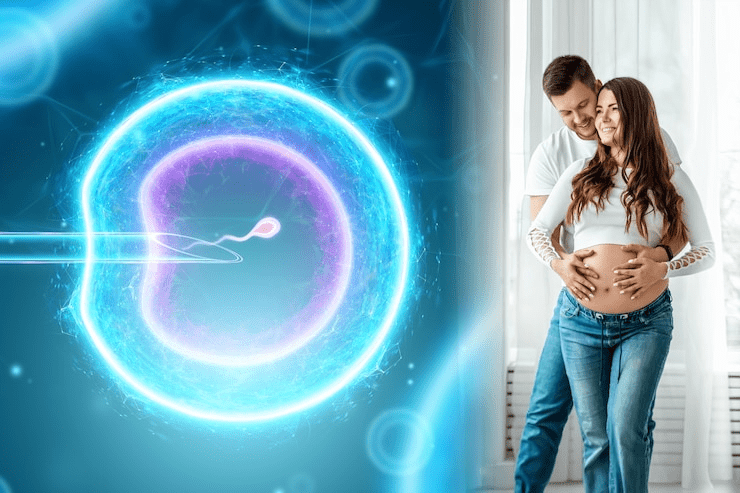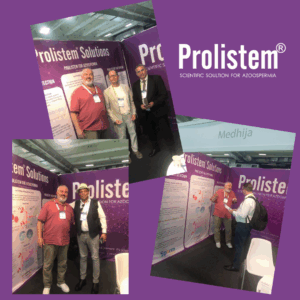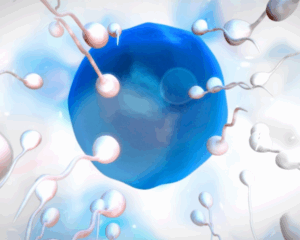
Prolistem for Non-Obstructive Azoospermia: A Comprehensive Guide
Prolistem for non obstructive azoospermia, Non-obstructive azoospermia (NOA)

Azoospermia, a condition characterized by the absence of sperm in semen, affects approximately 1% of the male population and up to 15% of infertile men worldwide. For years, azoospermia has posed significant challenges for couples trying to conceive naturally. However, the new treatment for azoospermia 2025 brings renewed hope with innovative medical advances and revolutionary therapies designed to improve sperm retrieval and fertility outcomes.
In this blog post, we will explore the latest breakthroughs in azoospermia treatment, emerging diagnostic techniques, and how these advancements are shaping the future of male infertility care. Whether you are a patient, healthcare provider, or interested in reproductive health, this comprehensive guide will keep you updated on what to expect in 2025 and beyond.
Before diving into the new treatments, it’s important to understand what azoospermia entails. Azoospermia means that a man’s ejaculate contains no measurable sperm. It is a significant cause of male infertility and is broadly classified into two types:
Obstructive Azoospermia (OA): Blockage or obstruction prevents sperm from entering the ejaculate despite normal sperm production in the testes.
Non-Obstructive Azoospermia (NOA): Impaired or absent sperm production in the testes due to genetic, hormonal, or environmental causes.
Traditional azoospermia treatments have focused on surgical correction, hormone therapy, or assisted reproductive technologies (ART) like IVF (In Vitro Fertilization) with sperm retrieval techniques such as TESE (Testicular Sperm Extraction). However, these methods sometimes have limited success, especially for men with NOA.
The field of male infertility has been evolving rapidly with advances in genetics, stem cell therapy, regenerative medicine, and microsurgical techniques. The new treatment for azoospermia 2025 incorporates these cutting-edge technologies to address both types of azoospermia more effectively.
Key reasons why 2025 treatments stand out:
Improved Success Rates: Higher sperm retrieval rates and better outcomes in assisted reproduction.
Minimally Invasive Approaches: New microsurgical and robotic techniques reduce patient discomfort and recovery time.
Personalized Medicine: Tailored therapies based on genetic and molecular profiling.
Regenerative Therapies: Stem cell and gene editing technologies aim to restore natural sperm production.
One of the most promising new treatments for azoospermia in 2025 is stem cell therapy. Researchers have discovered that stem cells derived from various sources can differentiate into sperm-producing cells.
How it works: Stem cells (often from the patient’s own bone marrow or adipose tissue) are isolated and induced to become spermatogonial stem cells, which are then transplanted back into the testes.
Benefits: Potential to restore natural spermatogenesis in men with NOA who have little or no sperm production.
Current status: Clinical trials are ongoing, but early results show significant improvement in sperm count and motility.
Advancements in gene editing tools such as CRISPR-Cas9 are opening new avenues for azoospermia caused by genetic defects.
Targeting genetic mutations: Certain genetic abnormalities (e.g., Y chromosome microdeletions, Klinefelter syndrome) are a major cause of azoospermia. Gene editing can potentially correct these defects at the DNA level.
Challenges: Ethical and safety concerns are being addressed, but this technology could revolutionize treatment within the next decade.
Microdissection Testicular Sperm Extraction (micro-TESE) is an advanced surgical method that allows precise identification and extraction of sperm-producing tissue.
Robotic assistance: Robotic microsurgery enhances the surgeon’s dexterity and visualization, leading to better sperm retrieval and reduced testicular damage.
Advantages: Less invasive, higher sperm recovery rates, especially in NOA patients.
While hormone treatments have been used for decades, new hormone modulators and targeted therapies are improving azoospermia management.
Selective Estrogen Receptor Modulators (SERMs): These drugs stimulate endogenous testosterone and sperm production with fewer side effects.
New hormone analogs: Designed to enhance sperm production with precision.
AI-powered diagnostic tools are transforming how azoospermia is diagnosed and managed.
Semen analysis: AI algorithms provide highly accurate sperm morphology and motility assessment.
Genetic profiling: AI helps interpret complex genetic data to personalize treatment.
Treatment outcome prediction: Machine learning models predict success rates, guiding patient counseling.
Accurate diagnosis is critical for effective treatment. New diagnostic advances include:
Next-generation sequencing (NGS): Detects subtle genetic mutations causing azoospermia.
Advanced imaging techniques: High-resolution ultrasound and MRI for detailed testicular assessment.
Liquid biopsy: Non-invasive blood tests to analyze sperm-related biomarkers.
These tools complement the new treatments by ensuring targeted and effective interventions.
While the new treatment for azoospermia 2025 focuses on cutting-edge medical technology, lifestyle factors remain crucial:
Avoid smoking, excessive alcohol, and toxins.
Maintain a balanced diet rich in antioxidants.
Manage stress through mindfulness or counseling.
Regular exercise improves overall health.
Supportive therapies like antioxidant supplementation may enhance sperm quality and improve treatment outcomes.
For men diagnosed with azoospermia, these new treatments offer:
Hope for natural conception: Stem cell and gene therapies aim to restore fertility without lifelong dependence on assisted reproduction.
Less invasive procedures: Robotic and microsurgical techniques minimize risks and recovery time.
Personalized care: Genetic testing and AI-driven decisions tailor treatments for better success.
Ongoing research: Patients can consider enrolling in clinical trials for access to innovative options.
No treatment guarantees a 100% cure, but the new treatments significantly increase the chances of sperm retrieval and conception.
Early clinical trials indicate safety, but long-term effects are still being studied.
Yes, surgical correction often restores sperm flow in obstructive azoospermia.
It may take several more years of trials and regulatory approval before widespread clinical use.
The new treatment for azoospermia 2025 marks a revolutionary era in male infertility care. With breakthroughs in stem cell therapy, gene editing, robotic surgery, and AI-assisted diagnostics, men with azoospermia now have more options. While some treatments are still experimental, ongoing research promises to unlock even more effective solutions shortly.
If you or a loved one is facing azoospermia, consult a specialized reproductive urologist to explore these cutting-edge therapies. Staying informed about the latest developments is key to making the best treatment choices and achieving successful fatherhood.

Prolistem for non obstructive azoospermia, Non-obstructive azoospermia (NOA)

Introduction Male infertility, especially caused by azoospermia, affects

We are proud to have participated in the

Introduction: A New Hope in Male Infertility Treatment
PROLISTEM® is a Patented Formula
Copyright © 2025 Prolistem®